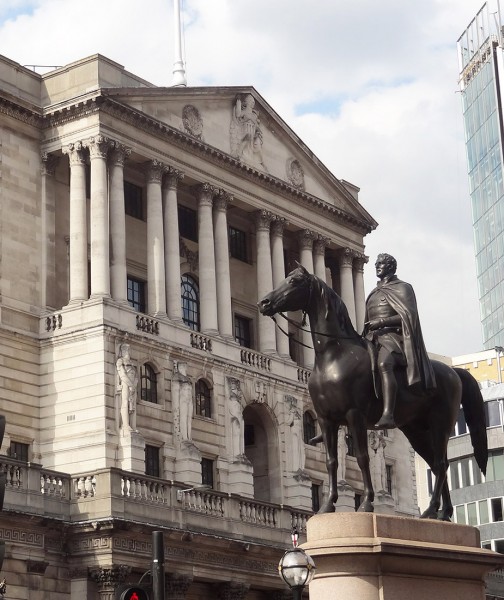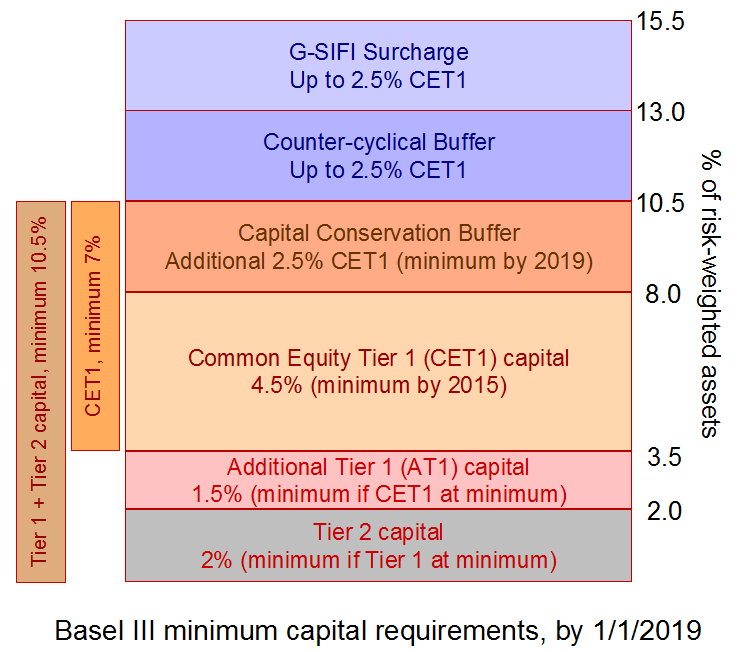 As we saw in the blog post Down down deeper and down, or a new Status Quo?, for many countries there is now a negative rate of interest on bank deposits in the central bank. In other words, banks are being charged to keep liquidity in central banks. Indeed, in some countries the central bank even provides liquidity to banks at negative rates. In other words, banks are paid to borrow!
As we saw in the blog post Down down deeper and down, or a new Status Quo?, for many countries there is now a negative rate of interest on bank deposits in the central bank. In other words, banks are being charged to keep liquidity in central banks. Indeed, in some countries the central bank even provides liquidity to banks at negative rates. In other words, banks are paid to borrow!
But, by definition, holding cash (in a safe or under the mattress) pays a zero interest rate. So why would people save in a bank at negative interest rates if they could get a zero rate simply by holding cash? And why would banks not borrow money from the central bank, if borrowing rates are negative, hold it as cash and earn the interest from the central bank?
 These questions are addressed in the article below from The Economist. It argues that to swap reserves for cash is costly to banks and that this cost is likely to exceed the interest they have to pay. In other words, there is not a zero bound to central bank interest rates, either for deposits or for the provision of liquidity; and this reflects rational behaviour.
These questions are addressed in the article below from The Economist. It argues that to swap reserves for cash is costly to banks and that this cost is likely to exceed the interest they have to pay. In other words, there is not a zero bound to central bank interest rates, either for deposits or for the provision of liquidity; and this reflects rational behaviour.
But does the same apply to individuals? Would it not be rational for banks to charge customers to deposit money (a negative interest rate)? Indeed, there is already a form of negative interest rate on many current accounts; i.e. the monthly or annual charge to keep the account open. But would it also make sense for banks to offer negative interest rates on loans? In other words, would it ever make sense for banks to pay people to borrow?
Read the folowing article and then try answering the questions.
Article
Bankers v mattresses The Economist (28/11.15)
Central bank repo rates/base rates
Central banks – summary of current interest rates global-rates.com
Worldwide Central Bank Rates CentralBankRates
Questions
- What is a central bank’s ‘repo rate’. Is it the same as (a) its overnight lending rate; (b) its discount rate?
- Why are the Swedish and Swiss central banks charging negative interest rates when lending money to banks?
- What effect are such negative rates likely to have on (a) banks’ cash holdings; (b) banks’ lending to customers?
- Why are many central banks (including the ECB) charging banks to deposit money with them? Why do banks continue to make such deposits when interest rates are negative?
- Would banks ever lend to customers at negative rates of interest? Explain why or why not.
- Would banks ever offer negative rates of interest on savings accounts? Explain why or why not.
- How do expectations about exchange rate movements affect banks willingness to hold deposits with the central bank?
- What are the arguments for and against abolishing cash altogether?
 Following the banking crisis of 2007/8 a new set of international banking regulations was agreed in 2010 by the Basel Committee on Banking Supervision. The purpose was to strengthen banks’ capital base. Under ‘Basel III’, banks would be required, in stages, to meet specific minimum capital adequacy ratios: i.e. minimum ratios of capital to (risk-weighted) assets. The full regulations would come into force by 2019. These are shown in the chart below.
Following the banking crisis of 2007/8 a new set of international banking regulations was agreed in 2010 by the Basel Committee on Banking Supervision. The purpose was to strengthen banks’ capital base. Under ‘Basel III’, banks would be required, in stages, to meet specific minimum capital adequacy ratios: i.e. minimum ratios of capital to (risk-weighted) assets. The full regulations would come into force by 2019. These are shown in the chart below.
The new Financial Policy Committee of the Bank of England has judged that some UK banks have insufficient ‘common equity tier 1 capital’. This is defined as ordinary shares in the bank plus the bank’s reserves. According to the Bank of England:
… the immediate objective should be to achieve a common equity tier 1 capital ratio, based on Basel III definitions and, after the required adjustments, of at least 7% of risk-weighted assets by end 2013. Some banks, even after the adjustments described above, have capital ratios in excess of 7%; for those that do not, the aggregate capital shortfall at end 2012 was around £25 billion.
Thus the banking system in the UK is being required, by the end of 2013, to meet the 7% ratio. This could be done, either by increasing the amount of capital or by reducing the amount of assets. The Bank of England is keen for banks not to reduce assets, which would imply a reduction in lending. Similarly, it does not want banks to increase reserves at the expense of lending. Either action could push the economy back into recession. Rather the Bank of England wants banks to raise more capital. But that requires sufficient confidence by investors.
 And the end of this year is not the end of the process. After that, further increases in capital will be required, so that by 2019 banks are fully compliant with Basel III. All this will make it difficult for certain banks to raise enough capital from investors. As far as RBS and the Lloyds Banking Group are concerned, this will make the prospect of privatising them more difficult. But that is what the government eventually wants. It does not want the taxpayer to have to find the extra capital. Re-capitalising the banks, or at least some of them, may prove difficult.
And the end of this year is not the end of the process. After that, further increases in capital will be required, so that by 2019 banks are fully compliant with Basel III. All this will make it difficult for certain banks to raise enough capital from investors. As far as RBS and the Lloyds Banking Group are concerned, this will make the prospect of privatising them more difficult. But that is what the government eventually wants. It does not want the taxpayer to have to find the extra capital. Re-capitalising the banks, or at least some of them, may prove difficult.
The following articles look at the implications of the FPC judgement and whether strengthening the banks will strengthen or weaken the rest of the economy.
Articles
Financial policy committee identifies £25bn capital shortfall in UK banks The Guardian, Jill Treanor (27/3/13)
Banks Told To Raise Capital By Financial Policy Committee To Cushion Against A Crisis Huffington Post (27/3/13)
UK banks’ £25bn shortfall: positive for banks, negative for BoE credibility, Sid Verma (27/3/13)
Doubts over Bank of England’s £25bn confidence game The Telegraph, Harry Wilson (27/3/13)
Bank of England tells banks to raise £25bn BBC News (27/3/13)
Q&A: Basel rules on bank capital – who cares? Laurence Knight (13/9/10)
U.K. Banks Seen Avoiding Share Sales After BOE Capital Review Bloomberg Businessweek, Gavin Finch and Howard Mustoe (27/3/13)
Banks Cut Basel III Shortfall by $215 Billion in Mid-2012 Bloomberg (19/3/13)
Will strengthening banks weaken the economy? BBC News, Robert Peston (27/3/13)
Bank of England News Release
Financial Policy Committee statement from its policy meeting, 19 March 2013 Bank of England (27/3/13)
Questions
- Explain the individual parts of the chart.
- What do you understand by risk-weighted assets?
- Distinguish between capital adequacy ratios and liquidity ratios.
- What could the banks do to increase their capital adequacy ratios? Compare the desirability of each method.
- If all banks around the world were Basel III compliant, would this make another global banking crisis impossible?
In a statement to the House of Commons on 9 February 2011, the Chancellor announced that banks would extend their new lending to SMEs (Small and Medium-Sized Enterprises) from £179 billion in 2010 to £190 billion in 2011. An important question is the extent to which this initiative, which forms part of a series of initiatives in conjunction with the banking sector known as Project Merlin, will impact on economic activity.
Let’s begin by thinking about the role that credit plays in an economy. Firstly, it serves a short-term role by enabling individuals and firms to ‘bridge the gap’ between their income and their spending. Secondly, it can, depending on the size and terms of the credit, help to fund longer-term investments. In the case of firms, for instance, it can help to fund capital projects such as an expansion of premises or the installation of new equipment or production processes.
The extension of credit is the main source of growth in the money supply. If the credit which is extended by financial institutions is spent it increases economic activity. The size of the increase in economic activity will depend on how many times the credit is passed on from one firm or individual to the next. In other words, it depends on the velocity of circulation of money – often referred to simply as V. If the initial credit funds a series of purchases and the recipients of these monies, i.e. those from whom the purchases are made, then use their increased deposits to fund purchases themselves, the expansion could be sizeable.
There is every indication that the additional credit for SMEs will be welcome and it seems reasonable to assume that this will positively impact on spending. But, by how much is not entirely clear. This is what fascinates me about macroeconomics, but, perhaps understandably, may well frustrate others! Once the payments for the purchases made using the newly available credit become new deposits, how will these recipients respond? Will other credit-constrained firms use this liquidity to engage in purchases themselves? But, what if these recipients use the monies to increase or rebuild their own financial wealth? In this last scenario – a pessimistic scenario – the velocity of circulation will increase relatively little and economic activity little too.
The corporate sector, of course, does not exist in isolation of other sectors of the economy and, in particular, of the household sector. As some of the income from the expanded credit flows to them in the form of factor payments (i.e. wages and profits) – though by how much is itself debtable – how will they respond? Again will credit-constrained households look to spend? Alternatively, will they hold on to these liquid balances perhaps using them as buffer-stock savings? This is not an unrealistic possibility given the leverage of households and the need to rebuild wealth, especially so in times of incredible economic uncertainty? But, who knows!
So while Merlin may have waved his wand, the full extent of its impact, though probably positive, is far from clear. Time will tell. Isn’t macroeconomics wonderful!
HM Treasury Press Release
Government welcomes banks’ statement on lending by 15% more to SMEs, and on pay and support for regional growth, HM Treasury, 9 February 2011
Statement to the House of Commons by the Chancellor
Statement on banking by the Chancellor of the Exchequer 9 February 2011
Articles
 Banks sign lending and bonus deal BBC News (9/2/11)
Banks sign lending and bonus deal BBC News (9/2/11)
Banks agree Project Merlin lending and bonus deal BBC News (9/2/11)
Osborne’s plans arrive too late for the economy Independent, Sean O’Grady (11/2/11)
Project Merlin ‘could weaken UK banks’ Telegraph, Harry Wilson (11/2/11)
Nothing wizard about Project Merlin Guardian UK, Nils Pratley (7/2/11)
Softball: Britain’s banks make peace with the government – for now The Economist (10/2/11)
Smaller firms insist banks must change their attitude The Herald (11/2/11)
Questions
- Detail the various roles that financial institutions play in a modern-day economy.
- Do the activities of banks carry with them any risks? How might such risks be reduced?
- What is meant by the velocity of circulation or the velocity of money?
- What factors do you think could affect the velocity of money?
- How does credit creation affect the growth of the money supply?
- What do you understand by individuals or firms being credit-constrained?
- What factors are likely to affect how credit-constrained an individual household is?
- What do you think might be meant by buffer-stock saving? What might affect the size of the buffer-stock held by a household?
 As we saw in the blog post Down down deeper and down, or a new Status Quo?, for many countries there is now a negative rate of interest on bank deposits in the central bank. In other words, banks are being charged to keep liquidity in central banks. Indeed, in some countries the central bank even provides liquidity to banks at negative rates. In other words, banks are paid to borrow!
As we saw in the blog post Down down deeper and down, or a new Status Quo?, for many countries there is now a negative rate of interest on bank deposits in the central bank. In other words, banks are being charged to keep liquidity in central banks. Indeed, in some countries the central bank even provides liquidity to banks at negative rates. In other words, banks are paid to borrow! These questions are addressed in the article below from The Economist. It argues that to swap reserves for cash is costly to banks and that this cost is likely to exceed the interest they have to pay. In other words, there is not a zero bound to central bank interest rates, either for deposits or for the provision of liquidity; and this reflects rational behaviour.
These questions are addressed in the article below from The Economist. It argues that to swap reserves for cash is costly to banks and that this cost is likely to exceed the interest they have to pay. In other words, there is not a zero bound to central bank interest rates, either for deposits or for the provision of liquidity; and this reflects rational behaviour.

